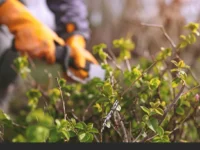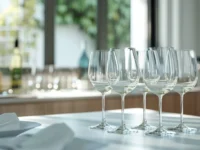For beginners in oenology or wine lovers, describing what happens through the nose or mouth during tasting can be complex. It must be said that the words used by the winemaker are not the most accessible! Here is what you need to know about wine and vineyards!
What is the composition of the wine?
Whether it's a bottle from the Côtes-du-Rhône, the Rhône Valley, Languedoc Roussillon, Burgundy or the Bordeaux vineyards, the wine is mainly endowed with water at 85% and 15% of alcohol:
- Ethanol;
- Glycerol;
- Sorbitol;
- Butylene glycol;
- Methanol.
In rosé wines, red wines, white wines, we also find sugarsacids and phenolic compounds (tannins, or anthocyanins). We can also find mineral substances and various organic substances.
The terms to qualify the wine : What we remember
Dress
This is the visual of your wine. The tasting starts with everything that appeals to the eyes, especially the beautiful shades of color.
Generally, a red wine has a dark, ruby or purple color. The older the wine, the more tinted colors are found. For the white wine, we tend to find green reflections.
The nose
Here we refer to everything that is aromatic. Before tasting, it is compulsory to take it out as the sense of smell is very important in the tasting. It allows to detect notes of red fruits, citrus fruits...
The bouquet
It is used by the winemakers to describe complex aromas developing in a bottle. We can find a fruity or acidic taste based on lemon, strawberry or raspberry for example, associated with grapes.
The attack
It is the effect that the wine gives you once in mouth. It is the first impression of the product of the soil that you are going to test. This attack can be more sweet as it can be more strong.
The material
It is the sensation that the wine creates once it touches your palace. We often use a variety of textures to describe this.
The grape varieties
It is important to know that cultivated vines are different from each other because of their foliage and their clusters. They will constitute the grape variety. There are several: pinot gris, merlot, coteaux, pinot noir, cabernet sauvignon...
Ample
Associated with the matter it is a term evoking the feel a beverage with a rich mouthfeel and a full range of aromas.
Tannic
It is a very powerful wine. Tannins are molecules found in the skin and seeds of grapes. They give this rather rough aspect. For the great wines of guard, the tannins will soften with time.
A term to describe tannins: Round. The roundness describes a wine without aggressiveness.
Balance
This is the most important point during a tasting. You need a good balance and a beautiful harmony to have a wine of great class.
How to preserve a grand-cru?
When you start to buy great wines, that you are not going to consume directly, the question of its conservation in order to keep its aromas and its finesse.
Among the main criteria to consider are:
- The temperature oscillated between 12 and 13°C;
- Humidity, at 70-75% of humidity;
- Darkness;
- The absence of vibrations.
Bottles should be kept lying down to keep the cork moist and prevent it from drying out.



